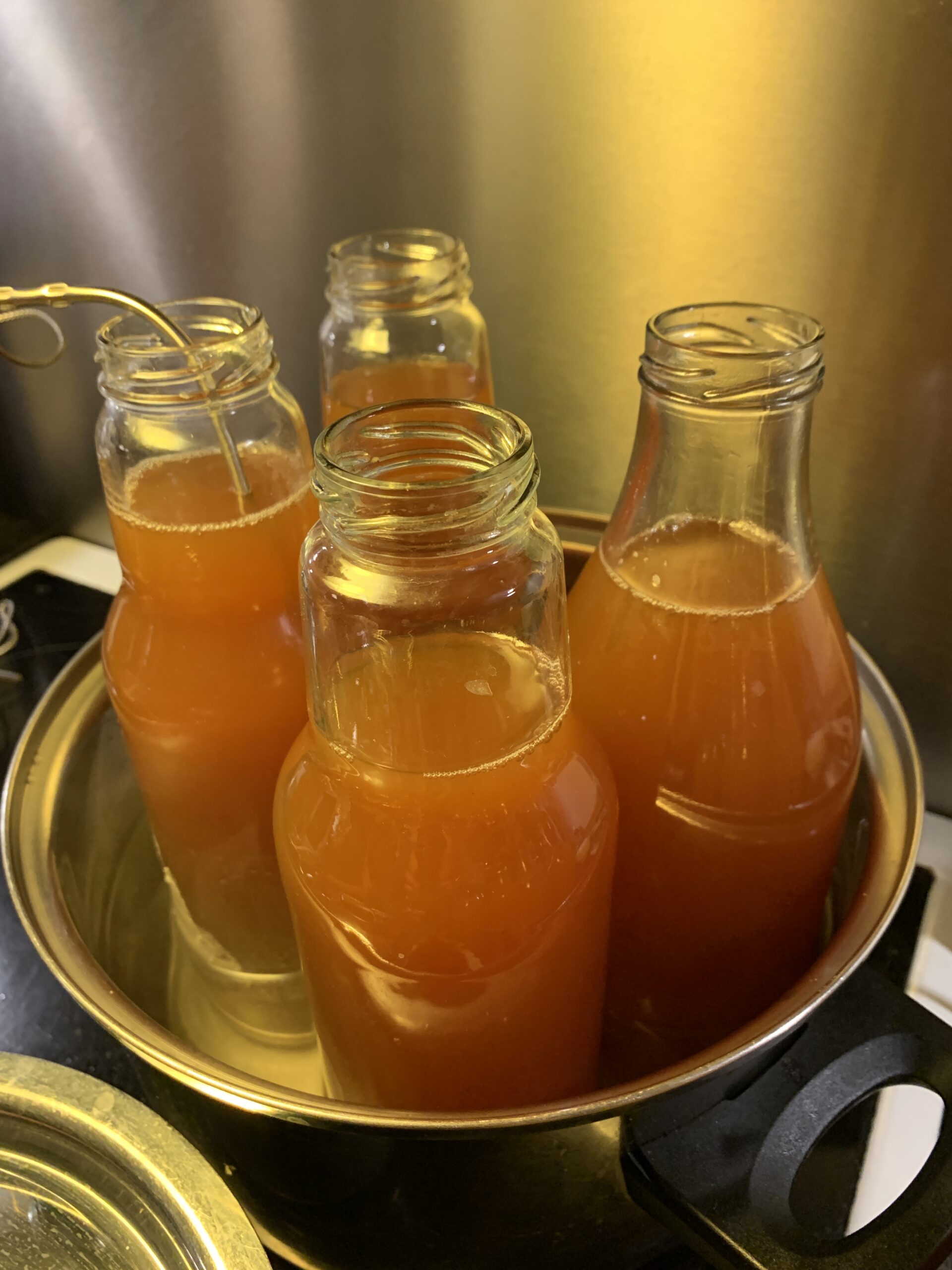Ah, the allure of hard cider! As a brewer, I’ve spent countless hours experimenting with different fruits, yeasts, and methods to create the perfect drink.
The number of apples required to make a gallon of hard cider can vary depending on several factors, such as the variety of apples, their size, juice content and the desired flavor extraction method.
On average, it takes approximately 36 to 48 medium-sized apples to produce a gallon of hard cider.
However, keep in mind that this is just an estimate, and the actual quantity may differ based on individual preferences and the specific cider-making process.
But as with everything in brewing, it’s not quite as simple as this number suggests. Let’s dive into the details and see how this number varies based on various factors.
Below I will go through the main factors determining the number of apples you need, such as their type, size, juice content, and the method of extraction.
1. The type of apples You Use
The kind of apple you use will significantly affect the amount needed. Some apple varieties are juicier than others, meaning you’ll get more cider per pound of apples.
For instance, the McIntosh apple is known for being particularly juicy, while the Granny Smith apple is less so. This means that you could need fewer McIntosh apples to make a gallon of cider than you would with Granny Smith apples.
2. The Size of the Apples
It’s also essential to consider the size of the apples. Smaller apples often provide less juice than larger ones. So, if you’re using smaller apples, you’ll need more of them to get enough juice for your cider.

3. The Method of Extraction
The method you use to extract the juice from the apples also affects the number of apples you need. I have found that using a hydraulic cider press is the most efficient method, as it allows you to extract the maximum amount of juice.

However, if you’re using a simple juicer or hand powered press, you may need more apples.
4. The Fermentation Process
The fermentation process also plays a role in the taste of your cider and the amount of final volume you’ll get from your apples.

The yeast you use, the temperature you ferment at, and the length of fermentation all impact the amount left after racking, aging etc.
For example, if you rack often or use a badly flocculating yeast, you may end out leaving more cider behind before it is ready to bottle.
The Aging Process
Finally, the aging process can affect the amount of cider you get from your apples. As cider ages, it can evaporate, reducing the quantity. This means that if you’re planning to age your cider for a long time, you might need more apples to end up with a full gallon.
The Taste of Your Cider
The taste of your cider is, of course, hugely important. Different apple varieties will produce different flavors, and the amount of apples you use will impact the intensity of these flavors. If you want a strong, robust apple flavor, you may choose to use apples that has a more concentrated juice, even if it means producing a smaller quantity of cider.
Some cider makers use frozen apples to make a so called “ice cider” that gets them a lower amount with a stronger taste and alcohol content.
Conclusion
So, there we have it. While the simple answer to the question, “How many apples does it take to make a gallon of hard cider?” is about 36 medium-sized apples, the reality is that this number can vary tremendously based on several factors.
Let’s summarize the main points:
1. The type of apples: Juicier apples yield more cider.
2. The size of the apples: Larger apples yield more juice.
3. The method of extraction: A cider press is the most efficient.
4. The fermentation process: Optimal conditions maximize juice yield.
5. The sugar content: More sugar can equal more cider as you can dilute it more.
6. The taste of the cider: Stronger flavors may require more apples if concentrated.
7. The aging process: Long aging can reduce the final quantity.
As with all things in brewing, making hard cider is an art as much as a science. Experimentation is key to finding what works best for you. Happy brewing!
FAQs
How many pounds of apples do I need for cider?
The amount of apples needed to make cider depends on various factors such as the desired quantity of cider, the type of apples used, and personal taste preferences. As a general guideline, it typically takes about 36 pounds of apples to produce one gallon of cider. However, this can vary, so it’s best to consult a specific cider recipe or consult with a local cider maker for more accurate measurements.
How many gallons of apple cider from a bushel of apples?
On average, a bushel of apples can yield approximately 2.5 to 3 gallons of apple cider. The exact amount may vary depending on the type and size of apples used, as well as the efficiency of the cider-making process.
How many apples does it take to make 8 oz of apple cider?
On average, it takes about 1.5 to 2 pounds of apples to make 8 ounces (or half a cup) of apple cider. The exact number of apples can vary depending on their size, juiciness, and the specific recipe used.
How many apples do I need for 5 gallons of cider?
To produce 5 gallons of cider, you would typically need around 36-40 pounds of apples. The exact quantity may vary depending on the variety and juiciness of the apples.




